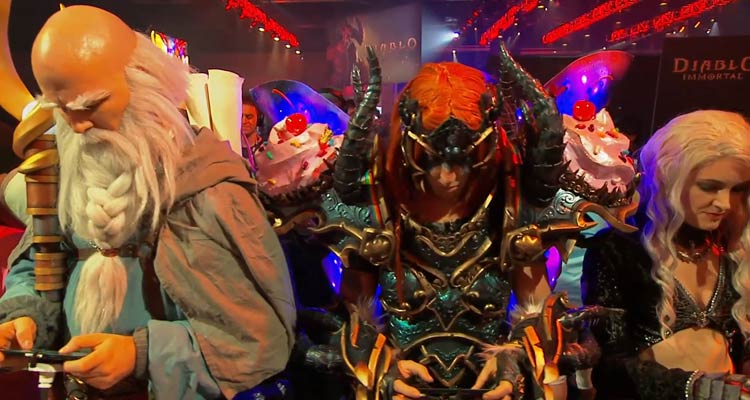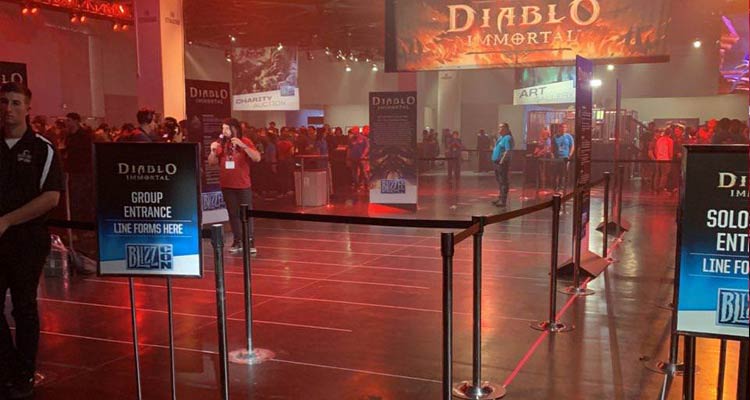The lasting impact of Blizzard’s F2P mobile game 5 Years later…
D4, F2P, AAA, OMG, WTF
In the world of gaming history, few moments have caused as much excitement and anger as when Diablo Immortal was announced and launched. Some people saw it as a big step forward, while others were disappointed. This mobile version of the popular action role-playing game made a big impact on the gaming industry. It started debates about how games can be free to play, how players can pay to win, and how people buy small things in games using real money. This game was made by a well-known game company, and its journey from excitement to criticism to redemption shows us what can go wrong and what can be learned in the gaming world.
A Misstep in Announcements
Let’s go back to 2018, when fans of the Diablo games were waiting to hear about a new game at an event called BlizzCon. But instead of getting good news, they got bad news. They found out about Diablo Immortal, a game only for mobile phones. This was different from the usual games for PC & consoles that fans loved. The game company, Blizzard Entertainment, seemed to have missed what fans really wanted.

People were really upset about this. They shared their angry feelings on social media, YouTube, and gaming forums. Many people were frustrated by the announcement. This showed that there was a growing disagreement between gamers and the companies that make games. These companies were starting to make games for phones and letting people play for free. But some players were worried that these companies were only interested in making money.
The Temptation of Free-to-Play
Changing to a free-to-play model for Diablo Immortal wasn’t necessarily a problem. After all, the gaming industry had seen games that are free to play and still make money in a fair way. However, what made this situation worse was the feeling that Blizzard cared more about making money than keeping the game’s true spirit. This feeling grew because of the introduction of pay-to-win elements and a lot of things you could buy using real money.
When players tried the beta version and early gameplay, they saw that Diablo Immortal’s progress was slowed down by waiting times, limited energy, and lots of in-game purchases. This way of paying to win worried people because it seemed like those who had more money would have an advantage, which went against the skill-based nature of the game. In a way, Diablo Immortal showed everyone how focusing too much on money could ruin the core of what made fans love the game.

Microtransactions: The Real Issue
The heart of the problem was the many microtransactions in Diablo Immortal. You could buy things like clothes for characters, power-ups, and other stuff with real money. In the past, you could earn these things by playing well. But now, you could just buy them. This was a big change that some people didn’t like.
What’s interesting is that despite the backlash, Diablo Immortal still made a lot of money and was popular. This sent a message to the gaming industry that players were willing to spend money even if they didn’t like how the game worked. This made other game companies think it’s okay to sell small things in games for money.
Impact on Other Games
The story of Diablo Immortal didn’t stop with the game itself. It changed the way other games were made and played. After this game came out, some game companies thought it was fine to make games where players could pay to win. They didn’t care if players didn’t like it. This led to more games that were free to play, but where you needed to spend money to do well. This created a divide among players – some were okay with spending money, while others didn’t want to play games like that.
On the other hand, there were players and game developers who wanted things to change. They wanted games to only sell things that didn’t affect the game too much, like changing how a character looks. They wanted the game to be about skills, not money. So, they made games like that, and players really enjoyed them.

A Journey Towards Improvement
As time went on, Blizzard Entertainment realized they had made a mistake with Diablo Immortal. They listened to what players were saying and started making changes to the game. They wanted the game to be more fair and enjoyable for everyone, whether they spent money or not. They added things to the game that made it less about paying to win and more about using your skills.
This showed everyone that game companies can learn from their mistakes and make things better. Blizzard tried to fix the problems and make players happier. They wanted the game to be about fun and adventure, not just about money. This helped the game become more popular in a positive way, by making players have a better time playing it.
Conclusion
The story of Diablo Immortal’s announcement, release, and aftermath reminds us about the power struggles in the gaming world. The clash between what players want, what game companies want, and how money is involved showed how putting profit over player experience can cause problems.
While the story of Diablo Immortal showed the gaming industry’s challenges with free-to-play, pay-to-win, and micro transactions, it also led to important conversations and changes. As game companies continue to balance making money and keeping players happy, the lessons from Diablo Immortal’s journey are a reminder of how the gaming world is always changing and evolving.






